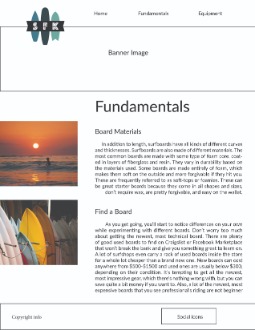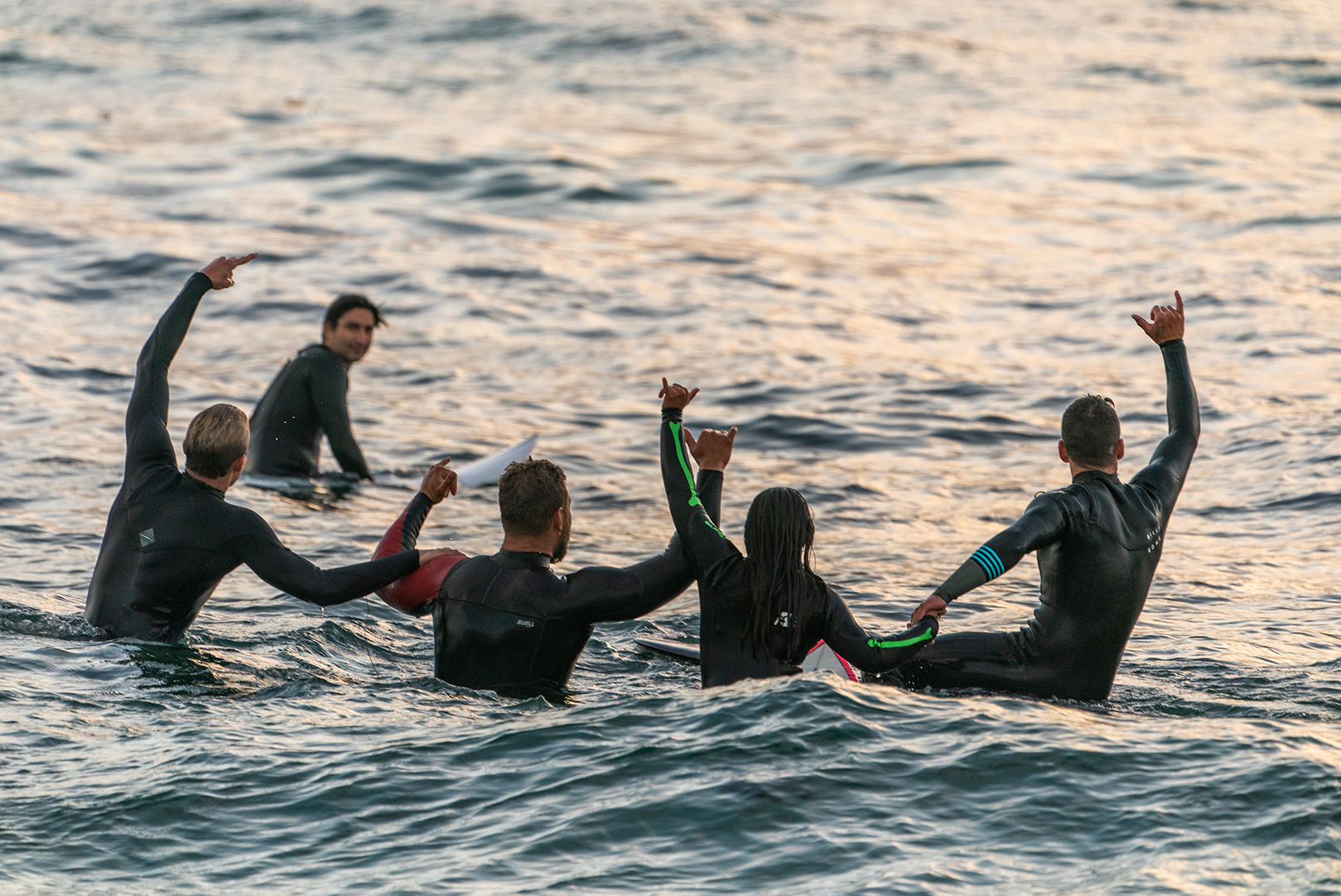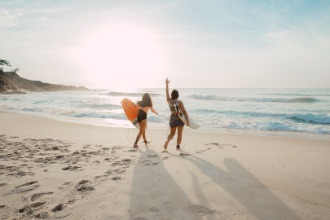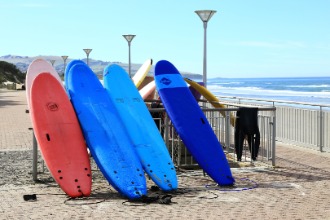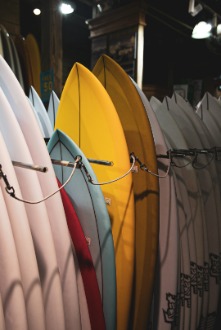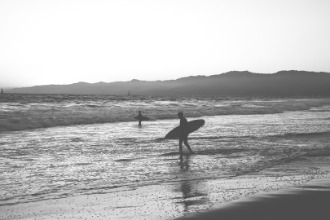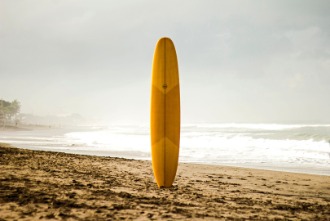Overview
Purpose
I love surfing and I want share that love with others. That’s why I’m creating a website about the fundamentals of surfing. The website will give a brief history of surfing, explain the basic equipment, go over principles of being in the ocean, and provide tips for starting out. The website will educate visitors who either want to start surfing or are just curious about it. The idea is to soften the learning curve. Surfing is historically a one-and-done event for first timers. My website will help those interested in surfing to go in with some confidence and knowledge, so that the first time isn’t such a terrible experience. If you want to surf but have no experience yet, my website will be your haven. Start frothing now my kooky friends.
Audience
My audience consists of people who want to start surfing, but don't know where to look for help. It also consists of people who just are interested about surfing in general and want to know more. The audience I'm targeting is between the ages of 14-35, is both male and female, and most likely lives within a few hours of a beach.
Branding
Website Logo

Style Guide
Color Palette
Palette URL: https://coolors.co/1f363d-40798c-70a9a1-cfe0c3| Primary | Secondary | Accent 1 | Accent 2 |
|---|---|---|---|
| [#40798C] | [#70A9A1] | [#1F363D] | [#CFE0C3] |
Typography
Heading Font: Permanent Marker
It's an informal font that catches attention and fits with the tone of my informal website.
Paragraph Font: Roboto
This is a simple sans-serif font that looks sleek and is easy to read.
Normal paragraph example
The best Whitewater Rafting in Colorado, White Water Rafting Company offers rafting on the Colorado and Roaring Fork Rivers in Glenwood Springs. Since 1974, we have been family owned and operated, rafting the Shoshone section of Glenwood Canyon and beyond.
Colored paragraph example
Trips vary from mild and great for families, to trips exclusively for physically fit and experienced rafters. No matter what type of river adventures you are seeking, White Water Rafting Company can make it happen for you.
Navigation
Site Map
Content
Home page
Surfing is a bast. Surfing is also hard. Very hard. Don’t, by any means, let this discourage you. Trust me, for every time you get water shot up your sinuses or washed around like a sock in a washing machine, there will be moments of pure ecstasy that keep you coming back again and again. So, where should you start? Right here. This is Surfing for Kooks where everyone is welcome to ask questions, learn, and share. Surfing is about having fun and in order to promote that idea we’ve created a safe place to learn the basics of getting started and soften the barrier to entry as much as possible.
Images for the Home page
Equipment
There are a lot of opinions when it comes to choosing your first board. Instead of telling you that you need to have a specific board, here is a simplified guide that can assist you in the process. Most surfboards can be grouped into these general, flexible categories. Shortboards, Longboards, and mid-length boards. Again, these categories are flexible and by no means all-inclusive. However, they should do the trick for understanding the very basics. Shortboards might range anywhere from 4-7ft, Longboards 9-12ft , and mid-lengths 7-8ft.
Board Length
The length of your board will affect all sorts of things like speed, maneuverability, stability, and paddling power. As a general rule bigger, longer boards are faster and more stable while shorter boards require more work on the surfer’s part to generate speed and our much more maneuverable. Many suggest learning on a bigger board because that speed and stability will help you to paddle into waves with more power and provide the stability required when you’re learning to pop up. That’s not to say that starting on a shortboard is the wrong way to go, it really depends what your goals are and how you want to surf. I started on a shortboard, and as a little guy, it was much less of a hassle to move around in the water and get comfortable with.
Board Materials
In addition to length, surfboards have all kinds of different curves and thicknesses. Surfboards are also made of different materials. The most common boards are made with some type of foam core, coated in layers of fiberglass and resin. They vary in durability based on the materials used. Some boards are made entirely of foam, which makes them soft on the outside and more forgivable if they hit you. These are frequently referred to as soft-tops or foamies. These can be great starter boards because they come in all shapes and sizes, don’t require wax, are pretty forgivable, and easy on the wallet.
Find a Board
As you get going, you’ll start to notice differences on your own while experimenting with different boards. Don’t worry too much about getting the newest, most technical board. There are plenty of good used boards to find on Craigslist or Facebook Marketplace that won’t break the bank and give you something great to learn on. A lot of surfshops even carry a rack of used boards inside the store for a whole lot cheaper than a brand new one. New boards can cost anywhere from $500-$1500 and used ones are usually below $300, depending on their condition. It’s tempting to get all the newest, most impressive gear, which there’s nothing wrong with, but you can save quite a bit money if you want to. Also, a lot of the newest, most expensive boards that you see professional’s riding are not beginner friendly whatsoever.
So what are you waiting for? Start the search now! Determine your budget and find something that will work for you. Here are a few boards I found myself that I would have loved to learn on.
Images for the Page 2
Fundamentals
Surfing requires practice and patience. Becoming comfortable on a board and in the ocean takes a whole lot of time in the water. So if you really want to get into this, know that you'll have to put in the time. Plan on surfing multiple times a week if you can, the more the better.
Images for the Page 3
Wireframes
Create three wireframes for your site. One for each page and list them here
Home
[Any additional details about home that the wireframe does not make clear]
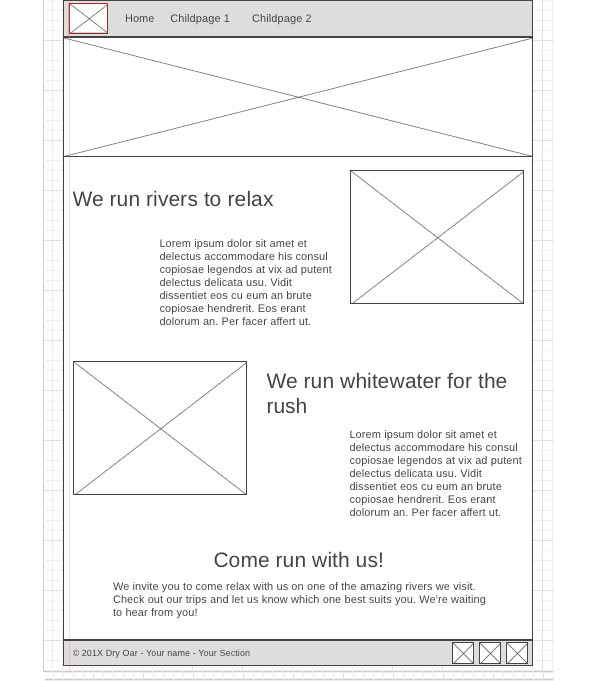
Equipment
[Any additional details about page 2 that the wireframe does not make clear]
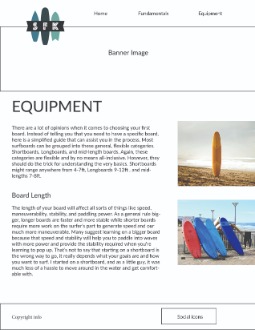
Fundamentals
[Any additional details about page 3 that the wireframe does not make clear]
